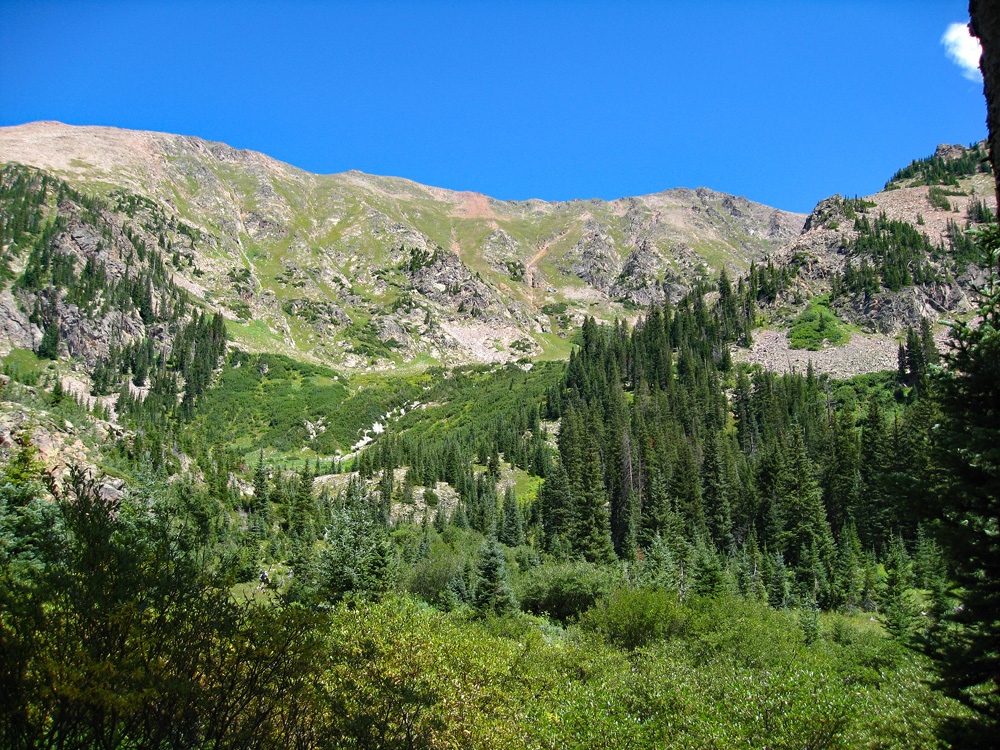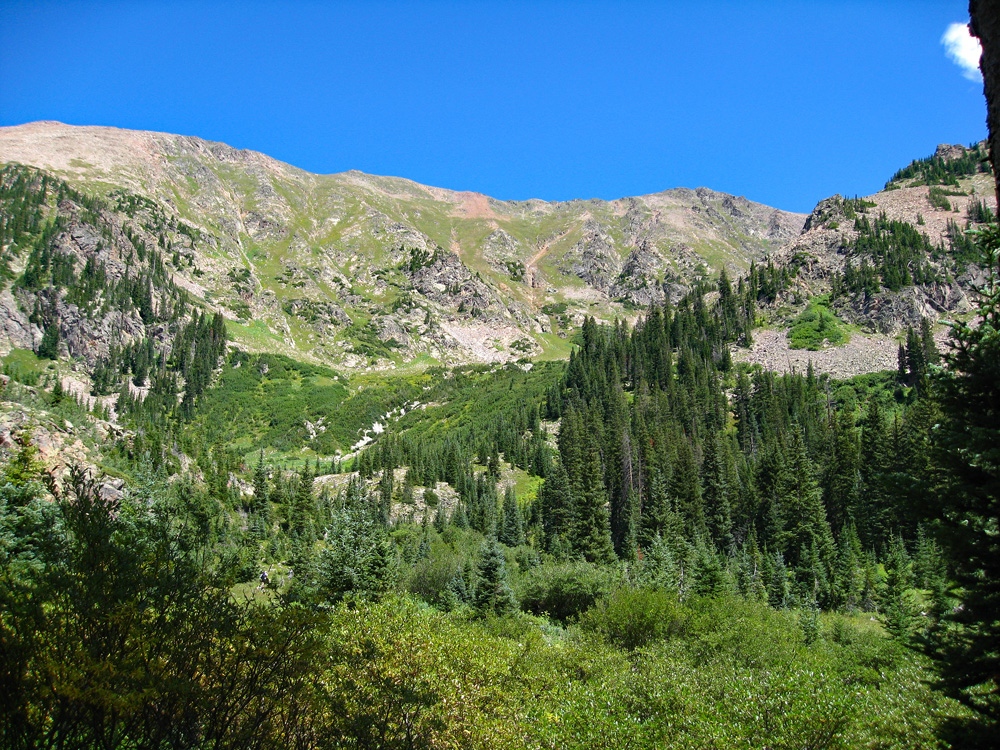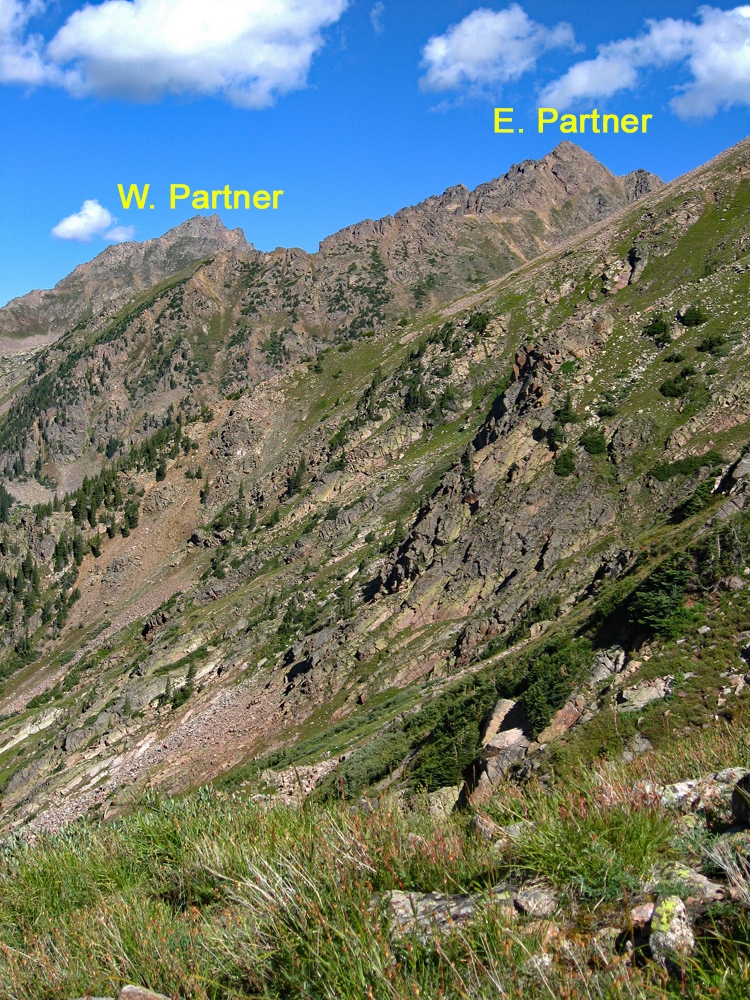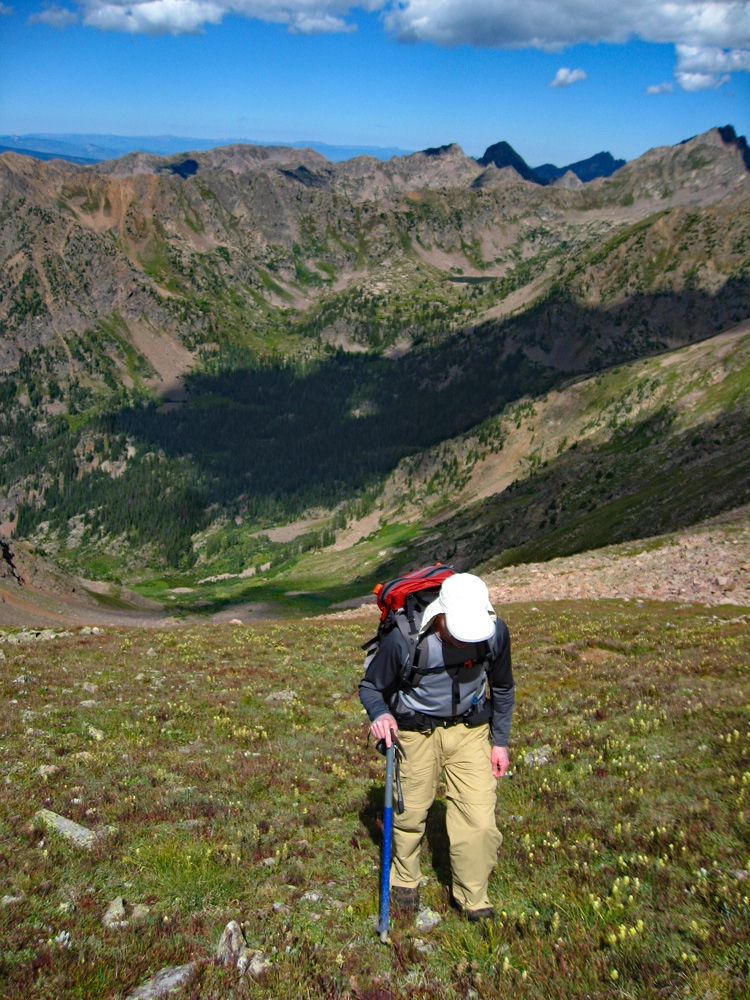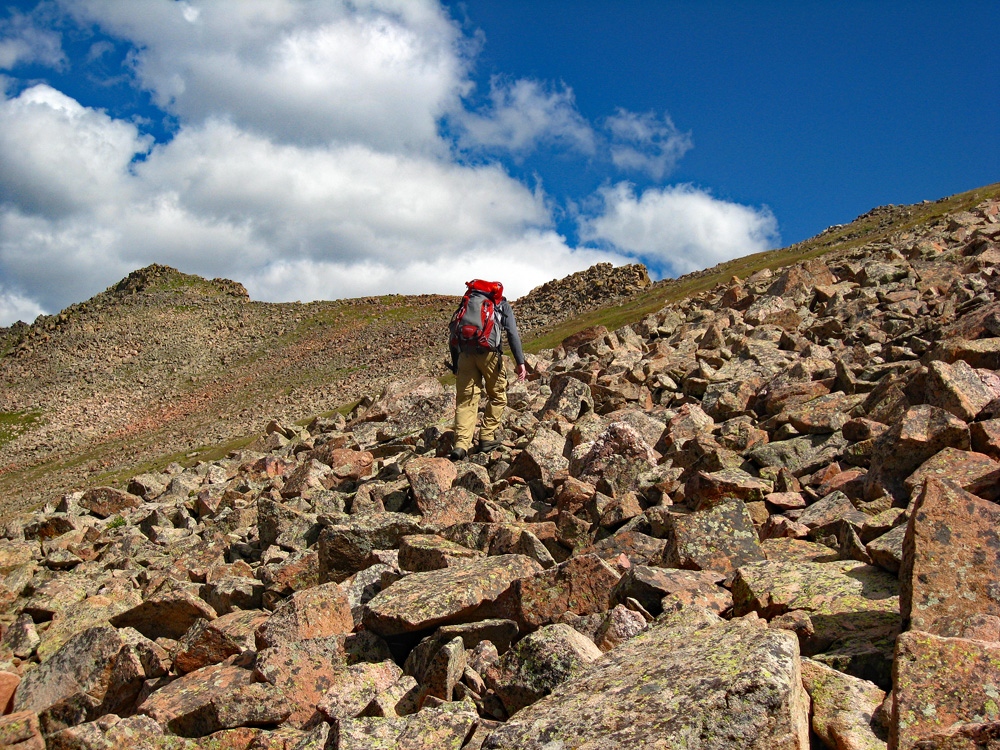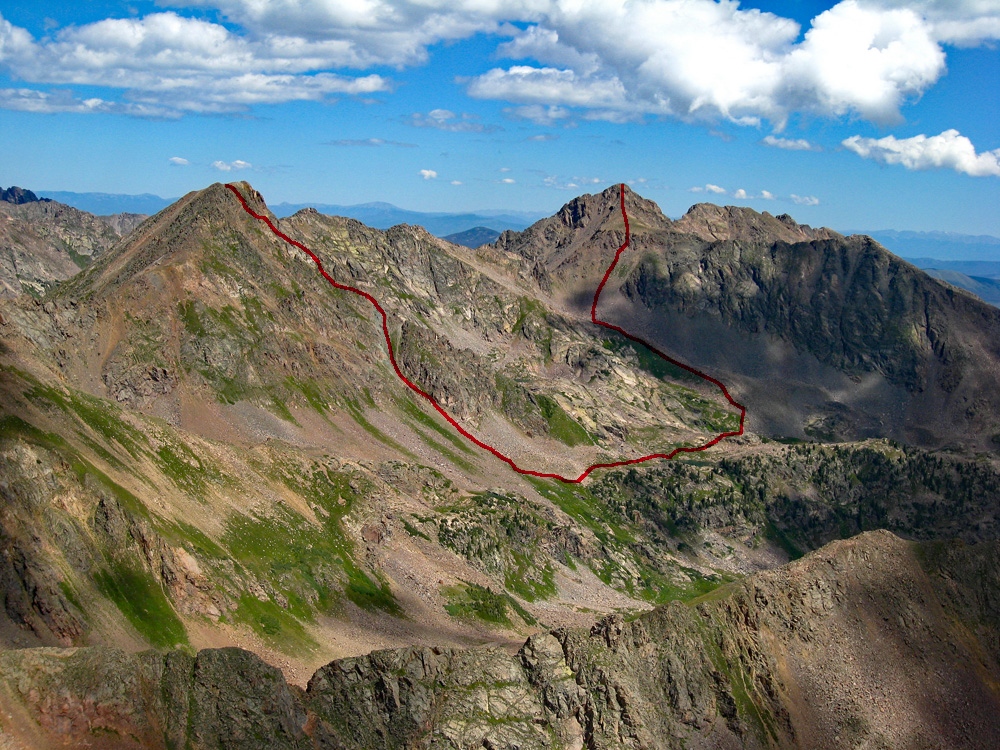From the Pitkin Lake trailhead, it's 3.75 miles to our suggested "lower campsite." From there, the route we took up to the summit was 2.1 miles and the shorter return mileage back to the campsite was 1.25 making a 3.35 mile loop. From the lower campsite location, we followed the trail a short distance on up and then left it and crossed to the east side of the main fork of Pitkin Creek. From here, we walked through an open meadow toward a steep valley that leads southeastward all the way to a saddle just south of “Climber’s Point” (13,022). Getting into the upper section of the drainage will be the most difficult part of your day on this hike. First you must wade through lush, tall vegetation & flowers with hidden rocks toward a steeper embankment of a couple hundred feet, the upper portion of which is covered with willows. From below, it appears that with a little short bushwhacking, you can push through the willows and reach more gentle ground above. There are two small creeks that come down from above. We headed for the one to our left (north) and pushed our way up through the vegetation. When we reached the willows, it was too steep to climb up through them forcing us into the only open spot, the drainage itself, which had a small amount of water running in it. We literally climbed up it, at times doing what seemed like 3rd class maneuvers and eventually broke out of the willows, further up than we expected or wanted.
Above the willows now, the remainder of this great valley/gully, is mostly tundra for a long ways, but lush vegetation often obscures the dangerous rocks and boulders hidden under the flowers. It is 1,800 feet of continuous up, taking a good hour and nearly another half. As you gain elevation, the impressive views of the Partner Peaks will attract your attention. As you near the saddle, it becomes more rocky, but there is still plenty of tundra to walk on. At the saddle just south of Climber’s Point, you may wish to pause for the outstanding view. The east ridge of Climber’s Point forms a formidable wall overlooking the head of the valley below. You can look down into the Bighorn Creek drainage and across the way, North Traverse Peak loomed over the valley below. You could also view the Grand Traverse ridge.
From the saddle hike up over Climber’s Point and then follow the ridge crest toward Mt. Solitude. This is a little more difficult than it appears at first and involves a few ups and downs and some scrambling around some rocky sections, however, this makes the summit approach a little more enjoyable. The day we arrived on this summit, we thought it somewhat ironic to find two other peakbaggers arriving not long after us on a peak named, "Mt. Solitude." So many of the 13ers, you never see a soul. The tundra-covered summit beckons you to take a comfortable seat and enjoy a fine climbers lunch while basking in the amazing wilderness view and the sea of Gore summits all around.
When we finished our lunch, we decided to take a more direct route from the summit of Solitude that led back into the same valley we had ascended in. It was mostly very steep tundra and grass, and toward the upper section, there was some scree that enabled us to plunge-step our way down very rapidly for a short while. As we came to about the last 400 feet of elevation loss to the creek, we decided to avoid the willow section we had encountered in the morning and so headed over to the south side of the drainage, hoping that the conifer trees we saw would keep us out of willows if we followed along the edge. But this led us into some very steep slopes with hidden bluffs. For a while, the idea worked, but eventually, we were forced back into willows, where we had to do some major bashing. The best route turned out to be the other little creek. This got us through the quagmire of plants and dropped us back onto the lower slope, filled with the flowers that stood about hip high, which also conceal larger boulders that you can easily trip on or sprain an ankle on. Once back across the creek, locate the Pitkin Lake trail and return to either your campsite or the trailhead.
Links to other information, routes & trip reports for this peak that may be helpful.
 N 39° 41' 09.17", W 106° 15' 40.76"
(Not Field Checked)
N 39° 41' 09.17", W 106° 15' 40.76"
(Not Field Checked)
 Peak Z / 'Gorgeous Peak' [(Formerly UN 13245)]
Peak Z / 'Gorgeous Peak' [(Formerly UN 13245)]
 Peak X [UN 13085 B]
Peak X [UN 13085 B]
 "East Partner Peak" [Previously UN 13,057]
"East Partner Peak" [Previously UN 13,057]
 "West Partner Peak" [Formerly UN 13041 A]
"West Partner Peak" [Formerly UN 13041 A]
